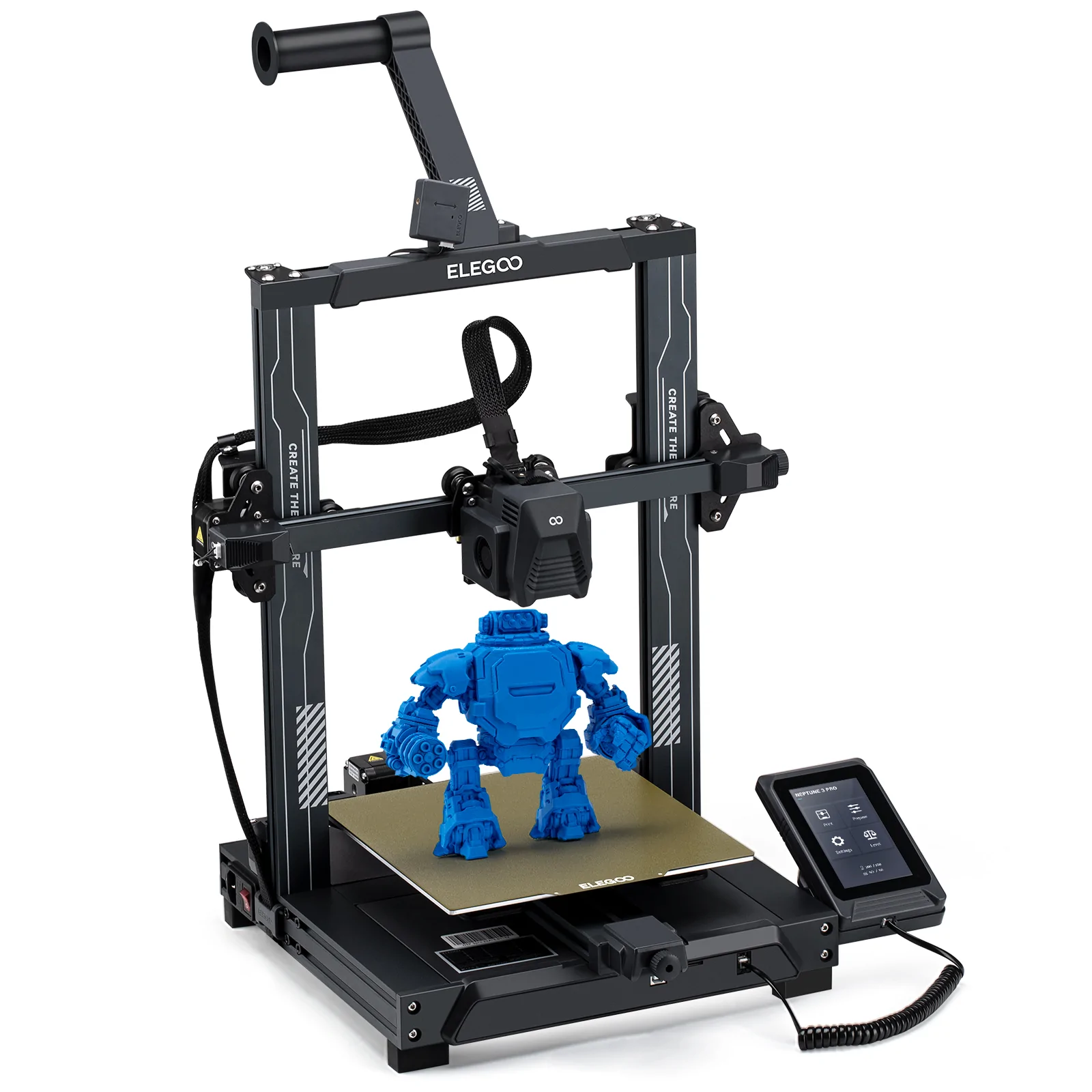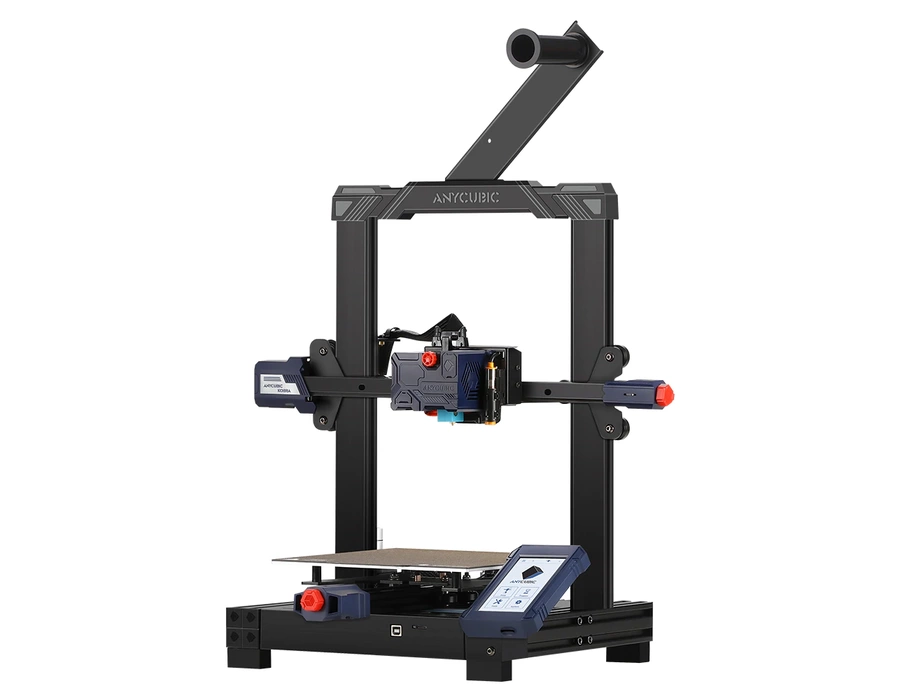Compare Neptune 3 PRO vs Kobra
Comparison between the best 3D printers
Choose the best 3D printer at the best price. The cheapest 3D printers are here.
Buy a 3D printer here with 3D Fila.
 |
 |
|
| Model | Neptune 3 PRO |
Kobra |
| Printing Material | Filament | Filament |
| Buy Filament for Elegoo Neptune 3 PRO | Buy Filament forAnycubic Kobra | |
| Estimated price | $230,00 | $259,00 |
| Manufacturer | Elegoo | Anycubic |
| Release Year | 2022 | 2022 |
| Print Volume [mm] | 225x225x280 | 220x220x250 |
| Printer Size [mm] | 445x515x475 | 486x430x486 |
| Weight [kg] | 8,1 | 7 |
| Power Loss Recovery | YES | YES |
| Enclosed printer | NO | NO |
| Bed Leveling | Automatic | Automatic |
| Filament End Sensor | YES | NO |
| Bed type | Heated | Heated |
| Power supply system | Direct Drive | Direct Drive |
| Standard nozzle | 0,4 | 0,4 |
| Maximum Nozzle Temperature [°C] | 260 | 260 |
| Maximum Bed Temperature [°C] | 100 | 110 |
| Maximum printing speed [mm/s] | 80 | 180 |
| Filament holder | YES | YES |
| Camera for supervision | NO | NO |
| Recommended filaments | PLA, PETG, Tritan, Flex, ABS | PLA, PETG, Tritan, Flex, ABS |
| Recommended slicers | Cura, Simplify, Slic3r, IdeaMaker e outros | Cura, Simplify, Slic3r, IdeaMaker |
| Maximum Resolution [mm] | 0,1 | 0,1 |
| Processor | ||
| Display | Display touchscreen 4,3'' | Display touchscreen 4,3'' |
| Power Supply | 250 | 110/220V / 400W |
| Connectivity | SD / USB | |
| Operating systems | Windows, Mac, Linux | Windows, Mac, Linux |
| Date of registration in the system | 2023-03-02 | 2022-11-09 |
| Release date | 2022 | 2022 |
| Extra features | The Elegoo Neptune 3 Pro printer stands out for its easy assembly and automatic bed leveling, ideal for different levels of users. Equipped with a direct-drive extruder and dual gears, it offers excellent adhesion to slippery materials such as TPU. It incorporates dual screws on the Z-axis, ensuring stable prints, and features an integrated task light for improved visibility. With a PEI-coated build plate and a detachable touchscreen, it combines functionality and convenience. The printer also features an efficient cooling system, filament sensor and a simplified user interface. | The Anycubic Kobra features automatic bed leveling and a direct extruder for easy filament handling. The print bed is coated with PEI on a flexible steel plate, improving adhesion and making prints easier to remove. The printer features sensorless homing and is designed to be easily disassembled for easy maintenance and customization. |
| Support for multiple colors and materials (AMS and CFS) | NO | NO |
Notes * |
||
| Cost-benefit | 6 / 10 | 7 / 10 |
| Hardware | 2.4 / 10 | 1.8 / 10 |
| Tela | . | . |
| Print volume | 3 / 10 | 3 / 10 |
| Performance | 0 / 10 | 1 / 10 |
Conclusion |
| In comparing the Elegoo Neptune 3 Pro and the Anycubic Kobra, both 3D printers offer substantial capabilities suitable for a variety of users, yet their differences present unique advantages depending on specific needs. The Elegoo Neptune 3 Pro, positioned as the more affordable option, offers a larger build volume, beneficial for printing larger objects. It features a filament end sensor, enhancing usability by preventing failed prints due to filament run-out. Its dual Z-axis screws contribute to print stability, and the inclusion of an integrated task light can significantly improve user experience during assembly and operation. The Neptune 3 Pro’s strengths in ease of use and additional features make it a compelling choice for beginners or those seeking reliable performance. On the other hand, the Anycubic Kobra, while priced slightly higher, boasts a faster maximum printing speed, making it more suitable for users who prioritize efficiency in their printing tasks. Its flexible build plate design simplifies the removal of completed prints, enhancing the post-processing experience. Moreover, its robust disassembly design allows users greater flexibility in maintenance and customization. This may appeal more to advanced users looking to modify their setups. In summary, if budget-conscious buyers prioritize larger print volumes and enhanced user-friendly features, the Elegoo Neptune 3 Pro emerges as the preferable choice. Meanwhile, the Anycubic Kobra could be favored by those who seek higher efficiency and ease of maintenance despite its higher price point. Ultimately, the decision will hinge on individual requirements—whether they lean towards size, usability features, or faster throughput. |

